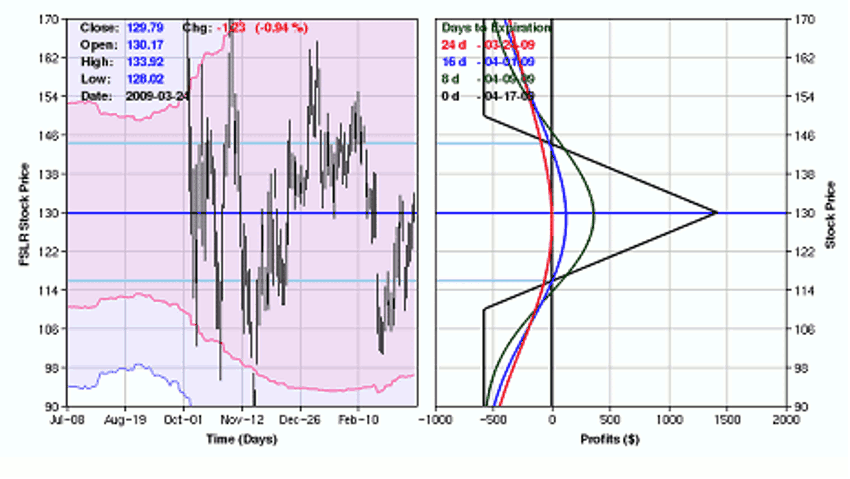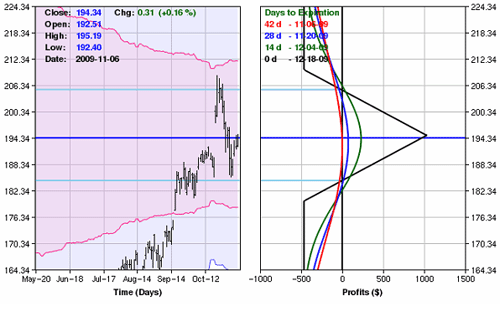Setting Profit Traps With Butterfly Spreads_1
Post on: 12 Июль, 2015 No Comment

Individuals trade options for a variety of reasons. Some people trade them in order to speculate on the expectation of a given price moment, while others use options to hedge an existing position. Others use more advanced strategies in hopes of generating extra income on a regular basis. All of these are valid objectives and can be successful if done correctly. Still, there is a whole range of unique strategies along the option trading strategy spectrum that offer outstanding reward-to-risk potential for those willing to consider the possibilities. One such strategy is the out-of-the-money butterfly spread (heretofore referred to as the OTM butterfly). (To learn more about why people trade options, check out our Options Basics Tutorial .)
Definition of a Butterfly Spread
The net effect of this action is to create a profit range, a range of prices within which the trade will experience a profit over time. A butterfly spread is most typically used as a neutral strategy. In Figure 1 you see the risk curves for a neutral at-the-money butterfly spread using options on First Solar (Nasdaq:FSLR ).
20Butterfly1.gif /%
The trade displayed in Figure 1 involves buying one 110 call, selling two 130 calls and buying one 150 call. As you can see, this trade has limited risk on both the upside and the downside. The risk is limited to the net amount paid to enter the trade (in this example: $580).
The trade also has limited profit potential, with a maximum profit of $1,420. This would only occur if FSLR closed exactly at $130 on the day of option expiration. While this is unlikely, the more important point is that this trade will show some profit as long as FSLR remains between roughly 115 and 145 through the time of option expiration. (Be sure to check out the Buying Options section of our Simulator How-To Guide to learn how to buy options like these.)
The critical difference is that with the OTM butterfly, the option that is sold is not the at-the-money option but rather an out-of-the-money option. To put it another way, an OTM butterfly is a directional trade. This simply means that the underlying stock must move in the anticipated direction in order for the trade to ultimately show a profit. If an OTM butterfly is entered using an out-of-the-money call, then the underlying stock must move higher in order for the trade to show a profit. Conversely, if an OTM butterfly is entered using an out-of-the-money put option then the underlying stock must move lower in order for the trade to show a profit.
20Butterfly2.gif /%

Figure 2 — FSLR 135-160-185 OTM Call Butterfly
With FSLR trading at about $130, the trade displayed in Figure 2 involves buying one 135 call, selling two 160 calls and buying one 185 call. This trade has a maximum risk of $493 and a maximum profit potential of $2,007. At expiration, the stock must be above the breakeven price of $140 a share in order for this trade to show a profit. Nevertheless, a look at the risk curves indicates that an early profit of 100% or more may be available for the taking if the stock moves higher prior to expiration. In other words, the idea is not necessarily to hold on until expiration and hope that something near the maximum potential is reached, but rather to find a good profit-taking opportunity along the way.
When to Use an OTM Butterfly Spread
Nevertheless, the OTM butterfly spread offers option traders at least three unique advantages. First off, an OTM butterfly spread can almost always be entered at a cost that is far less than would be required to buy 100 shares of the underlying stock. Secondly, if the trader pays close attention to what he or she pays to enter the trade, he or she can obtain an extremely favorable reward-to-risk ratio. Finally, with a well-positioned OTM butterfly spread, a trader can enjoy a high probability of profit by virtue of having a relatively wide profit range between the upper and lower breakeven prices. In the wide spectrum of trading strategies, not many offer all three of these advantages. (For information on advanced trading strategies, read the Conversion Arbitrage Tutorial .)














